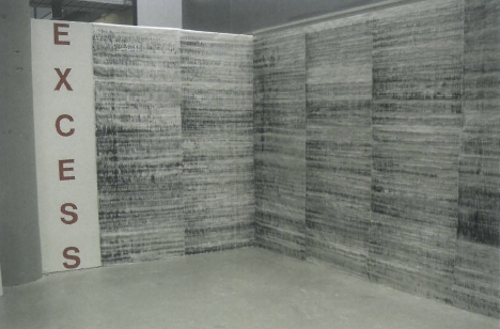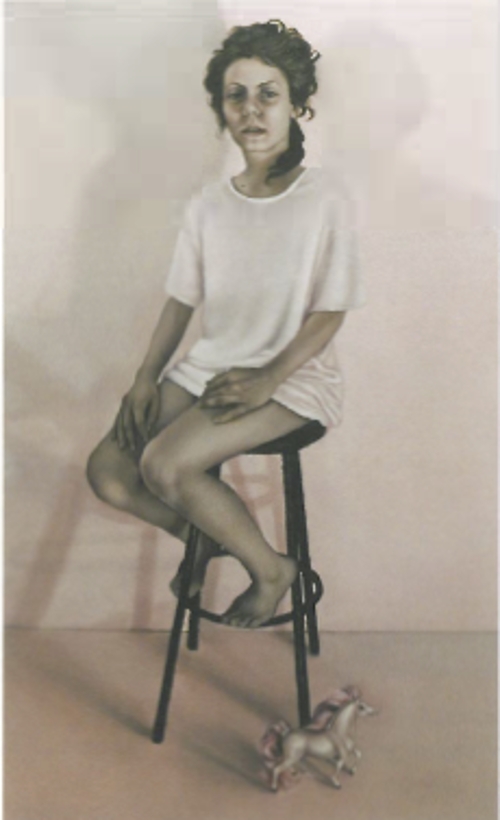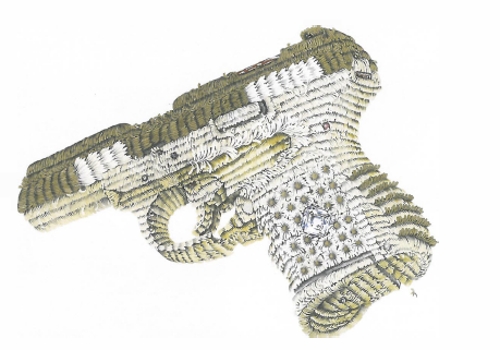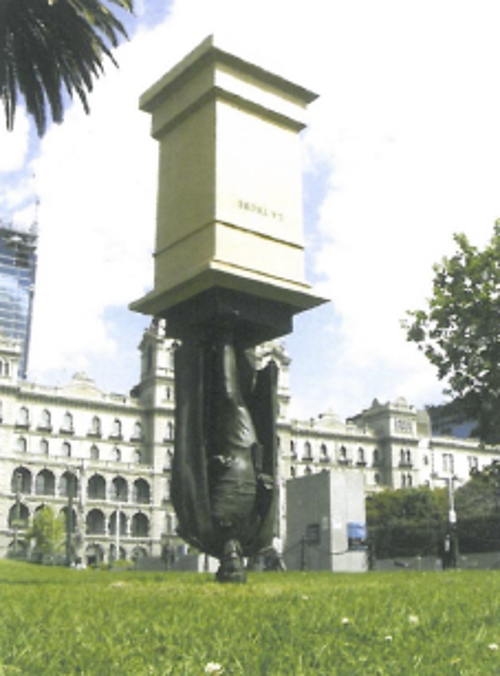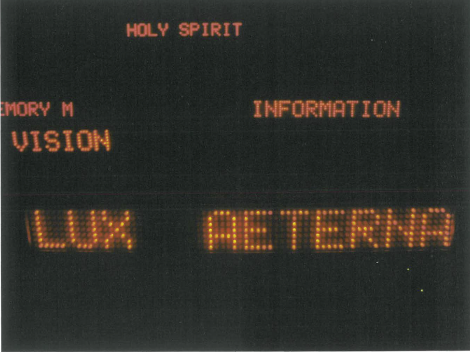
In part this survey exhibition of the work of Miriam Stannage shows her to be as satisfyingly resistant to classification as ever, although her recent choices in subject matter and layers of associational meaning provide pathways across disparate media and across time. One of the joys of viewing Sensation is to reflect how her work remains encompassing of differing media, sometimes quite utilitarian in its deployment and sometimes quite classical and romantic.
Yet, for all the apparent diversity this survey emphasises Stannage's cohesiveness of intent and highlights the consistent detachment that proves so empowering in her art and is in some ways an embodiment of her pursuit.
Sensation moves between photography, sound, video, painting, installation of found elements and LED texts produced since 1989, yet the artistic language, concerns, ideas and method are all pervasive and appear more seamless than ever before.
Unquestionably the proliferation of images using crime scene tape, fingerprints, generic references to Morse Code or Braille and specific references to September 11, the Port Arthur and Dunblane massacres among others, accumulate to immerse the viewer in emotions of our times. Reverberating throughout the entire exhibition, engagement with events both actual and feared is unavoidable.
In the accompanying catalogue Gael Newton poetically articulated it: 'what registers & is the level of tension between the cool, often abstract surfaces and the resurgence of the bass notes of a violent underworld & There is a multimedia performative dimension as well, which, rather than apocalyptic, is graciously elegiac and ultimately redemptive and beautiful.'
By way of example, the triptych 9/11/01 is a monumental painting in inky matt black and luminous sky blue. Given its title it could implode with meaning but rather, characteristic of Stannage, it is a calm, reflective tableau, its memorial quality and triptych form perhaps as readily alluding to three panelled altar painting of the Renaissance as to colour field painting of the mid-twentieth century. In formative overseas travel Miriam Stannage was moved by the work of Ad Reinhardt and it is difficult to not ponder this in 9/11/01. The repeated, stamped date across the surface more a mantra or prayer than a frenzy.
Similarly, her multiple LED message works possibly recall the work of Tatsuo Miyajima but at the same time belong in her own lineage of extensive use of codes, signs, measures of time, evidenced elsewhere in this exhibition and previously well documented. The sensation of glowing, speeding texts is a recent consolidation of Stannage's interest in the temporal and in vanitas. It is as though her enduring use of text finds an added dynamic voice in LED messaging and typically she is embracing of whatever tools can best elucidate her thoughts.
Responding to Stannage's work is to situate oneself between the deadpan and the expressively sophisticated. While her work has always relied on a constructed and assembled reality she shuns excessive artifice or deliberate obfuscation. Her work is inextricably informed by art history and art criticism which sometimes engenders a wryness and perspicacity. There is a veneer to be penetrated to acquire meanings and intentions. In a lecture from 1998 I suggested that much of Stannage's work was attributable to 'Systemic Painting' as named by Lawrence Alloway, in that she usually elected to work in series with a planned orderliness and that her formalism, be it Conceptual or Minimal was one that 'allowed' content. This still seems apt.
Sensation is testament to the importance of ongoing and considered analysis of senior artists and for the recognition that the whole is sometimes greater that the sum of the parts. The John Curtin Gallery has a reputation for insightful, empathetic and elegant presentation of their exhibitions. This is another confident example parallelling the mature confidence of the artist under review.


